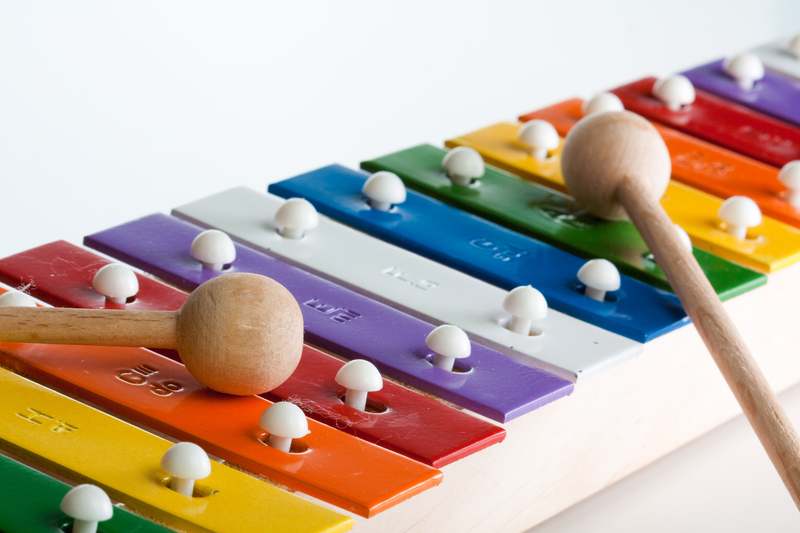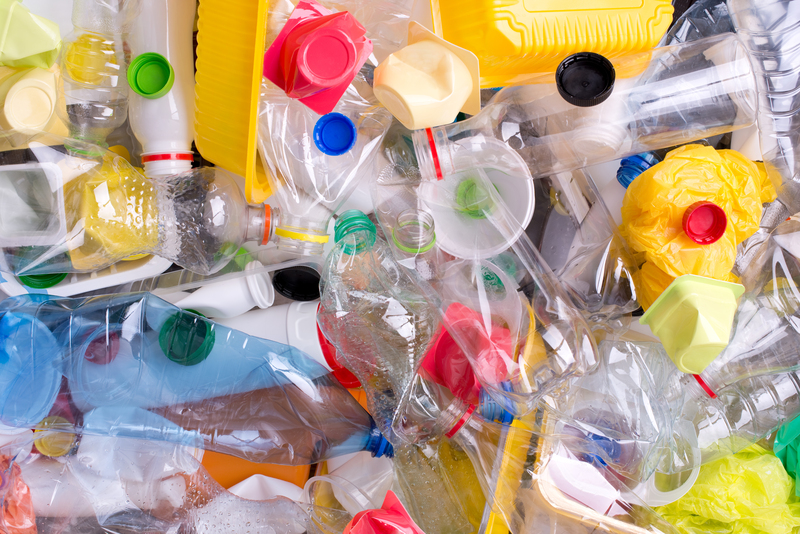Innovative Ways for Plant Pot Disposal: Eco-Friendly & Creative Solutions
When your beloved houseplant outgrows its home or sadly wilts away, you're left with the leftover: an empty plant pot. Often, these containers--ranging from humble terracotta to colorful plastic--pile up, taking space or ending in landfills. But tossing plant pots doesn't have to be your only option. Innovative ways for plant pot disposal abound, making it possible to reduce waste, help the environment, or even add a dash of creativity to your home or garden. Explore these practical, eco-friendly, and even artful methods for plant pot disposal and give your old containers a second life.

Why Proper Plant Pot Disposal Matters
Every year, millions of plant pots--plastic, ceramic, terracotta, and beyond--are discarded after use. Unfortunately, many end up in landfills, where materials like plastic can take centuries to decompose. Responsible plant pot disposal is crucial for several reasons:
- Environmental Impact: Plastic pots contribute to pollution and microplastics if not recycled or disposed of properly.
- Natural Resources: Many pots are made from materials that require significant resources to produce. Reusing or recycling preserves these materials.
- Community and Creativity: Old plant pots can be powerful resources for local schools, gardeners, and artists when disposed of innovatively.
Proper plant pot disposal goes beyond trashing old pots; it's about sustainability, resourcefulness, and community-minded thinking.
1. Recycling Plastic Plant Pots
A large portion of plant pots are made from plastic. Unfortunately, local recycling programs often do not accept these plastics due to the mix of resin types. *But don't despair!* Innovative recycling solutions for plant pots are emerging:
Garden Center & Nursery Pot Take-Back Programs
-
Many garden centers have established take-back bins or collection programs for returned plastic pots and trays. These are sent to specialized recyclers to be processed into new products. Home Depot, Lowe's, and numerous independent nurseries participate in such green initiatives.
-
Always check if your local store participates, and clean your pots of soil or plant debris before dropping them off.
Specialized Recycling Facilities
-
Some municipal recycling centers, especially in larger cities, have the means to recycle #5 polypropylene and #2 HDPE plant pots. Look for facilities using Terracycle or similar services dedicated to hard-to-recycle plastics.
Tip: If you live in a rural area, consider organizing a community plant pot recycling drive, pooling resources to deliver pots to recycling hubs.
2. Reusing and Upcycling Plant Pots
Perhaps the most eco-conscious plant pot disposal method is simply to reuse or upcycle. Whether you're an avid gardener or a crafty soul, creative repurposing can give your pots brand-new life.
Garden & Home Reuse Ideas
- Seed Starting: Small pots are perfect mini-greenhouses for young seedlings. Sterilize and reuse each season rather than buying new cell trays.
- Organizing Tools: Use larger pots in sheds, garages, or workspaces for sorting tools, brushes, or fertilizers.
- Indoor Decor: Terracotta or ceramic pots make excellent holders for candles, cooking utensils, or even as rustic vases inside your home.
Upcycling Into Art & DIY Projects
-
Make a Topsy-Turvy Planter: Stack several pots on a metal rod, tilting each layer for a whimsical vertical garden. Paint pots for a splash of color!
-
Bird Baths and Feeders: Glue pots together and seal the hole for a simple backyard water station for feathered friends.
-
Garden Sculptures: With imagination, pots become funky characters, wind chimes, or toadstool seats for kids' play areas.
-
Holiday Ornaments: Tiny pots, decorated with paint or ribbon, make adorable tree ornaments or gift containers.
Upcycling is both eco-friendly and satisfying, letting you get creative while reducing waste.
3. Composting Biodegradable Pots
Not all pots are plastic! More manufacturers now make biodegradable plant pots from materials like coir (coconut fiber), peat, paper, rice hulls, or even cow manure. These break down naturally in home compost bins or garden beds.
How to Compost & Dispose of Biodegradable Pots
-
Direct Planting: Some biodegradable pots can be planted directly into the ground with your plant, where they decompose harmlessly and add organic matter to the soil.
-
Composting: If your pot is compostable, tear or shred it to speed up the breakdown process, then add it to your compost pile along with other green waste.
-
Landscaping Mulch: Shredded pots can also serve as mulch to help retain soil moisture and suppress weeds.
Always look for certification labels that verify a pot's compostable or biodegradable properties before composting.
4. Donating Plant Pots
If your old pots are in decent shape, they may be cherished by others. Plant pot donation is a wonderful method of disposal, providing resources for community groups, schools, or beginning gardeners.
Who Can Use Donated Plant Pots?
- Community Gardens: Spaces dedicated to urban agriculture often accept used pots for starting seeds or sharing plants with members.
- Schools & Libraries: Youth gardening programs and educational workshops need supplies and may be thrilled to accept donations.
- Senior Centers or Assisted Living Homes: Many gardening activities for seniors depend on gently used containers.
- Nonprofit Garden Projects: Organizations such as Plant a Row for the Hungry or local garden-sharing networks accept plant pot donations.
Before donating, always clean and sanitize your plant pots to prevent disease spread.
5. Trading and Sharing Plant Pots
Consider a plant pot swap! Plant pot sharing programs--often online or community-led--are growing in popularity. The idea is simple: exchange your unused pots for new-to-you ones, fostering circularity and reducing the demand for new plastics.
How to Get Involved
- Local Gardening Clubs: Many clubs operate regular swap events for members, including pots, tools, and seeds.
- Online Marketplaces: Websites and apps like Craigslist, Facebook Marketplace, Nextdoor, or Freecycle often list free or for-trade pots in your area.
- Community Events: Some botanical gardens, flea markets, or green fairs host plant and pot swaps.
*Swapping pots* is a fun, social, and sensible approach to innovative plant pot disposal.
6. Turning Old Plant Pots Into Useful Garden Tools
Beyond the straightforward, there are plenty of novel ways to dispose of or repurpose plant pots directly in your garden.
Practical Repurposing Ideas
-
Slug & Snail Traps: Place upturned pots near vulnerable plants, then collect and relocate pests each morning.
-
Watering Aids: Insert the base of a pot into soil near thirsty plants and fill it with water for a makeshift drip irrigator.
-
Soil Scoops: Cut or break plastic pots to make a handy scoop for potting mixes.
-
Root Barriers: Create in-ground root barriers by burying large pots to contain aggressive herbs or bamboo.
-
Outdoor Storage: Stack and store irrigation supplies or children's toys neatly right in the garden.
7. Disposing of Broken or Damaged Plant Pots
What about pots that can't be reused or donated, such as cracked terracotta or shattered ceramics? Though they may be beyond repair, they still offer valuable resources.
How to Handle Unusable Pots
-
Crocking Material: Broken ceramic and terracotta shards are perfect for placing at the bottom of new pots to improve drainage before adding soil.
-
Mulch or Pathway Filler: Crushed pottery can be used as an attractive mulch or as filler between stepping stones in paths.
-
Mosaic Art Projects: Use colorful fragments to create eye-catching mosaics for garden benches, stepping stones, or wall pieces.
-
Local Disposal Guidelines: Always check local recycling or disposal guidelines--some facilities accept broken ceramics in construction waste recycling streams.
8. Choosing Eco-Friendly Plant Pots for the Future
Perhaps the most innovative approach to plant pot disposal is to rethink the pots you buy in the first place. Investing in sustainable pots can make future disposal far easier--and better for the planet.
Eco-Friendly Pot Options
-
Clay or Terracotta: Long-lasting, natural, and recyclable as crocks even after breakage.
-
Wood-Fiber and Bamboo Pots: These often last several years, are biodegradable, and compost naturally over time.
-
Recycled Plastic Pots: Many manufacturers now produce pots from 100% post-consumer recycled materials, which can be recycled again after use.
-
DIY Containers: Get creative and convert objects like tin cans, old boots, or woven baskets into planters rather than buying new pots.
9. Tips for a Plant Pot Disposal Action Plan
- Audit your collection: Identify which pots are still usable, which can be repurposed, and which must be disposed of.
- Clean & sanitize: Always remove soil and sterilize pots to prevent pests and diseases before reuse, donation, or recycling.
- Seek local resources: Contact nurseries, recycling centers, or garden clubs in your area for the latest information on plant pot disposal programs.
- Educate others: Share tips and resources with friends, family, or neighbors to spread awareness about sustainable disposal options.

Conclusion: Making Plant Pot Disposal Sustainable & Inspired
Innovative ways for plant pot disposal are limited only by your imagination and willingness to take eco-action. From reusing and upcycling to recycling, trading, and donating, your unwanted pots can find new life and purpose far beyond the landfill. Plus, by choosing sustainable pots when purchasing new ones, you make next year's cleanout even greener. Whether you're a passionate gardener, community leader, or DIY enthusiast, creative plant pot disposal keeps your home and yard organized and helps protect the planet for generations of green thumbs to come.
Remember: every plant pot you reuse, recycle, or creatively repurpose is one less item in our landfills, and one more step towards a sustainable future.
Frequently Asked Questions: Innovative Plant Pot Disposal
Can all types of plant pots be recycled?
Not always. Most plastic plant pots marked with recycling numbers #2 (HDPE) or #5 (PP) may be recyclable at special centers, but check local guidelines. Terracotta and ceramics are rarely accepted in normal recycling streams, but can be reused or repurposed.
Are biodegradable pots safe for my garden?
Yes! Most biodegradable or compostable pots made from natural fibers decompose safely in soil or compost. Always check packaging for certification.
How do I safely clean old plant pots for reuse?
Scrub with hot, soapy water and rinse. For extra sanitizing, soak pots in a 10% bleach solution for 10 minutes, then rinse thoroughly and dry before reuse or donation.
What should I do with broken ceramic or terracotta pots?
Broken pots make excellent drainage crocks, mulch, or materials for mosaic art projects. If you must throw them out, check for local recycling in construction waste.
How can I avoid waste when buying new plant pots?
Whenever possible, choose recycled, biodegradable, or long-lasting materials and commit to reusing or responsibly disposing of them after use.
With these tips and options, you'll lighten your environmental footprint while keeping your garden beautiful and organized, year after year!